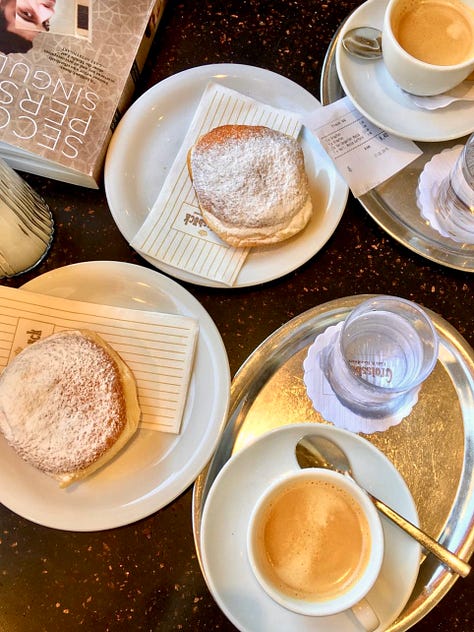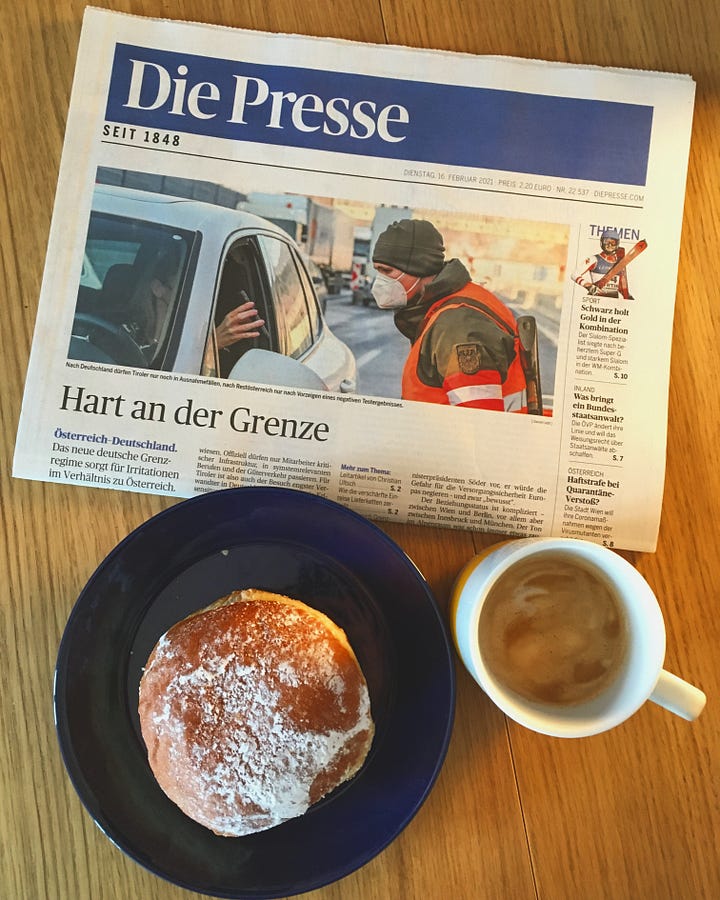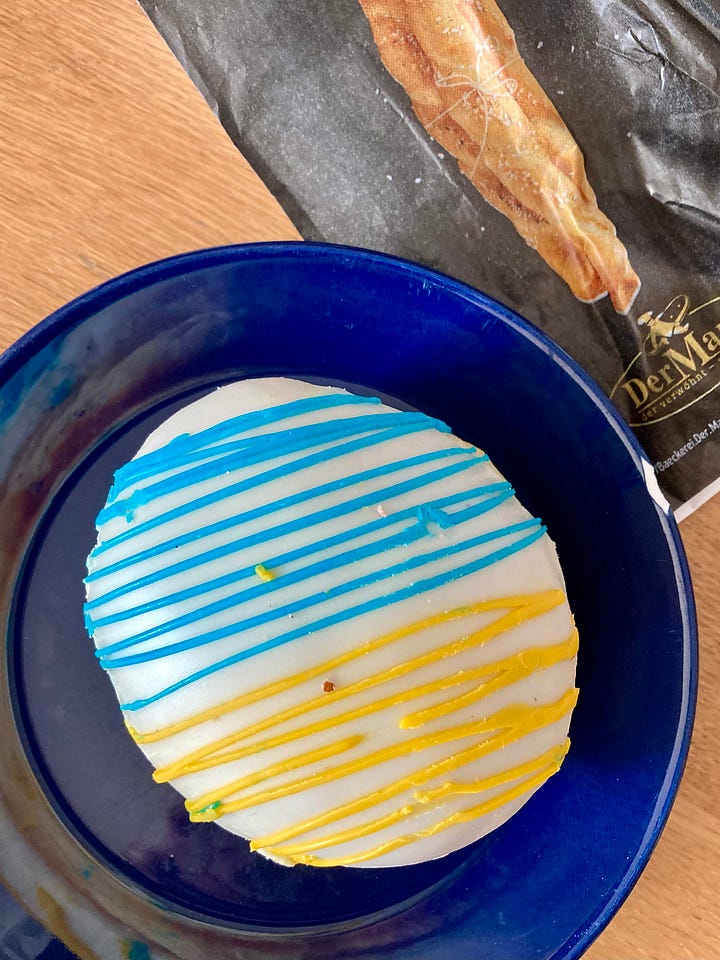What Makes A Krapfen?
The round fried yeast donut filled with apricot marmalade is the culinary symbol of Austria's carnival season, which ends on Fat Tuesday
Servus!
Shrove Tuesday/Fat Tuesday/Mardi Gras is just around the corner and, in the spirit of the season, yesterday morning I found myself at my desk drinking a cup of coffee and eating a Krapfen. The culinary symbol of the Austrian carnival or Fasching season, which runs from November 11 until the Tuesday before Lent, a Krapfen is a small, round yeast donut fried in hot oil, filled with apricot marmalade, and finished with a liberal coating of powdered sugar. Between the sticky jam and plumes of dusty sugar, I’ve eaten more practical breakfasts to be sure but few so delicious.
Readers with long memories will know that I used to write a blog on Viennese pastries called Strudel, Sugar and Schlag, meaning I am (or was) fairly well-versed on the history and origins of the city’s sweet treats, the Krapfen among them. The popular myth about this donut revolves around a cook in the court of the Habsburg royal family called Cäcilie Krapf, who was said to have thrown a piece of yeast dough in a fit of anger at her husband (or an appreciate) that missed and landed in a vat of sizzling hot fat. Out of trouble and strife, the modern Krapfen was supposedly born, with Krapf being the woman who gave it its name. Make of this what you will.
In reality, the first record of Krapfen or something akin to it appearing in German-language cookbooks occurs around the year 1200. At first, Krapfen were something restorative eaten by hard-working farmers; it wasn’t until the nineteenth century that this donut as we recognize it today became a staple of Viennese city life, beloved as it was by the Habsburgs who served rum-soaked or gold coin-studded versions to their guests after long nights of drinking, dancing, and debauchery. A kind of plain poverty food—Bauernkrapfen are larger, wider, and open-faced rather than filled—became, in the hands of the aristocracy, a symbol of opulence, extravagance, and excess.







At this time of year, Austrian publications take it upon themselves to become the arbiters of what constitutes and who sells the best Krapfen. Gault&Millau established the following criteria for their taste test this year: the donut should be golden brown save for the light band around the middle, which should be even in thickness; it should smell fresh and yeasty and not like old, rancid fat; and the filling should be evenly distributed and well-balanced, both sweet and tart, with a clear, strong apricot flavor. Their winner was the Krapfen from the confectioners Oberlaa, which makes sense if one is judging according to those criteria, in which case the criteria may need some work.
The country’s main food and drink-cum-lifestyle magazine Falstaff, which used to conduct its own taste test has, since COVID, turned over the work of choosing the nation’s best Krapfen over to its readers. This, of course, has transformed the whole exercise into an unseemly popularity contest, with bakeries trawling for votes via Facebook and Instagram while the polls are open. Still, Falstaff’s readers got far closer to the truth than Gault&Millau’s expert jury. 33 percent of Viennese voters chose the bakery chain Der Mann as the winner, followed by Ströck (31 percent) and the neighborhood family-owned bakers Groissböck on 14 percent.
All three make excellent Krapfen, I must say. And if you want to know what I was eating for breakfast yesterday, I went for the leading supermarket Krapfen, which won the Falstaff poll with a whopping 51 percent of the vote nationwide, miles ahead of the competition: Hofer (Aldi). The average Austrian is said to eat 14 Krapfen per year. I’m just trying to do my part.
Bis bald!
Thank you for subscribing to the Vienna Briefing. If you know someone who might also be interested in receiving this newsletter, consider sharing it with them today.
The Vienna Briefing is a free newsletter. If you enjoy and would like to support my work, think about sending me a tip via PayPal. Thank you to all those who have contributed.
Jihadis Jailed
Two men were sentenced to life imprisonment and another two handed down lengthy prison sentences for their roles in the 2020 Vienna terror attack. Four civilians were killed when, in November 2020, an Islamist terrorist went on a shooting rampage in Vienna’s first district.
Spies Expelled
Four Russian diplomats suspected of espionage and declared personae non gratae have until today to leave Austria. Two of the diplomats were stationed at the Russian Embassy and two others at the Permanent Mission to the United Nations.
Testers Laid Off
Lifebrain, the firm that runs Vienna's PCR COVID-19 testing system, will lay off 500 of its 600 staff at the end of February citing the coming expiration of the federal government’s COVID-19 countermeasures on June 30. Vienna’s city government is also holding consultations today about ending its own mask mandate on public transport at the end of the month.




